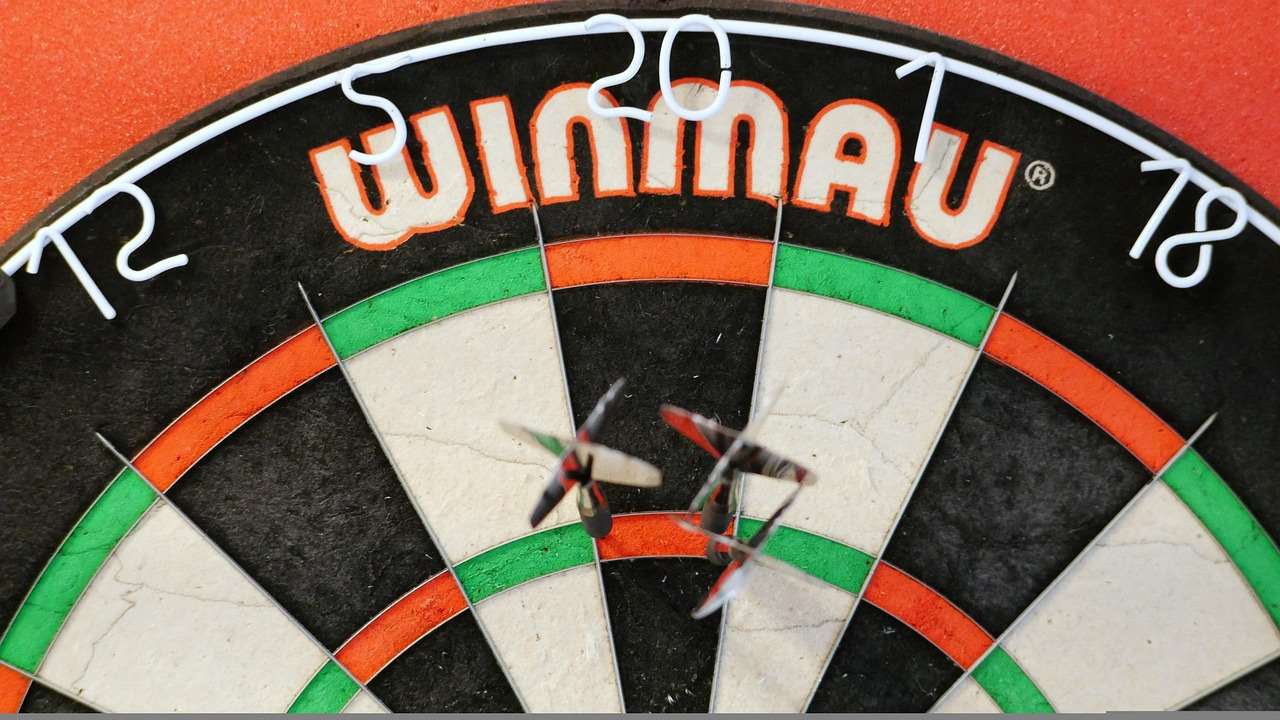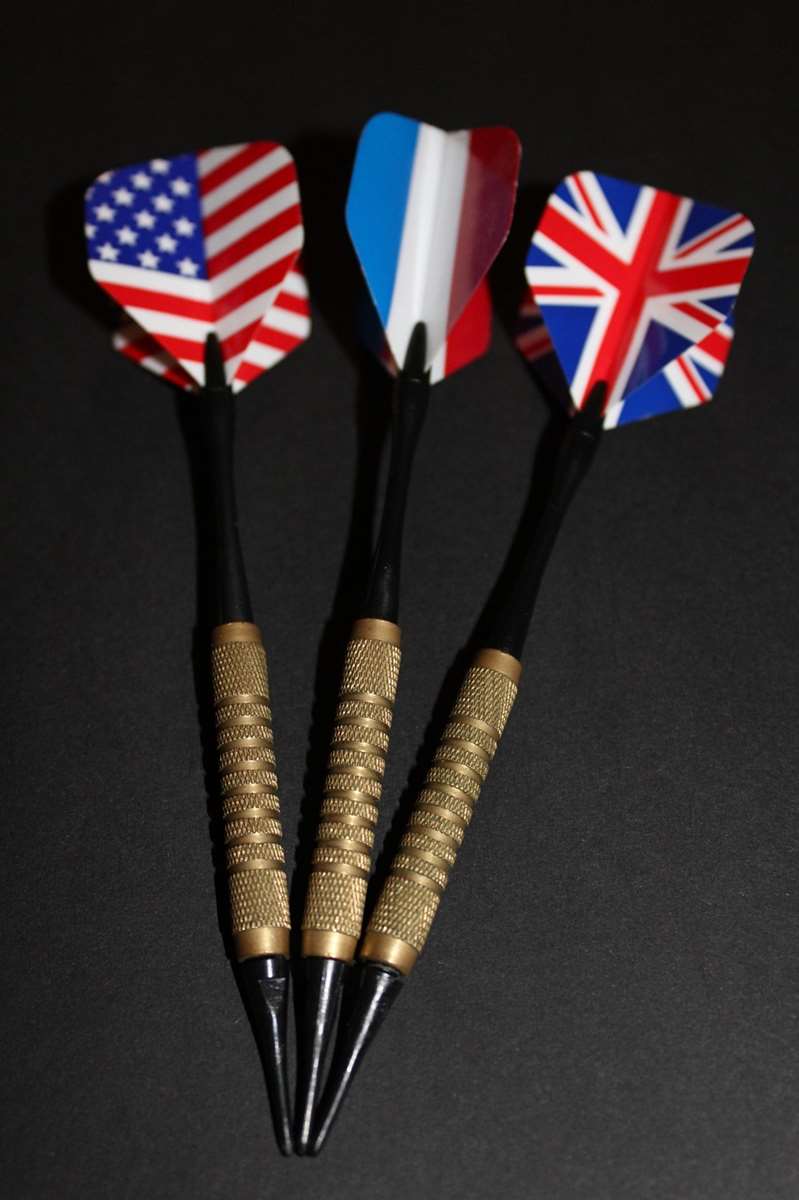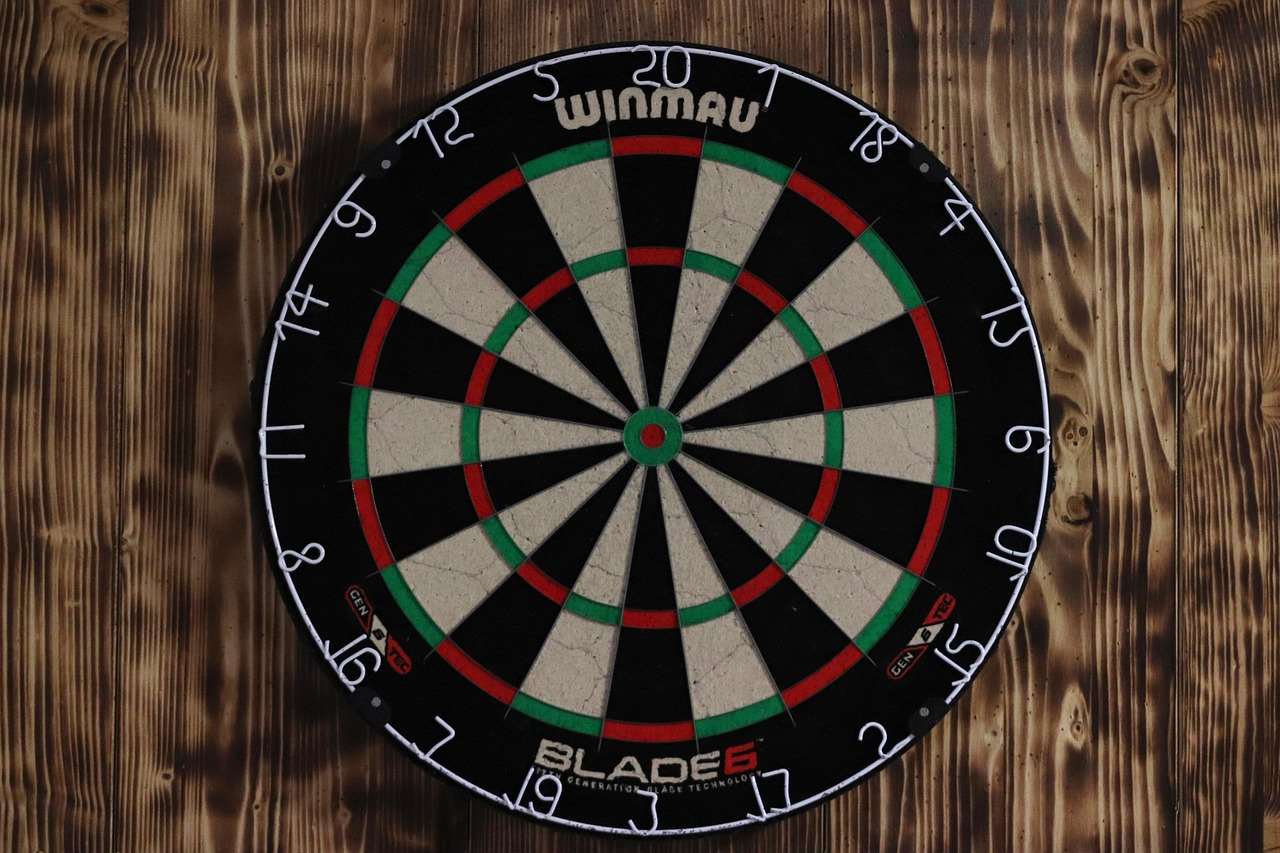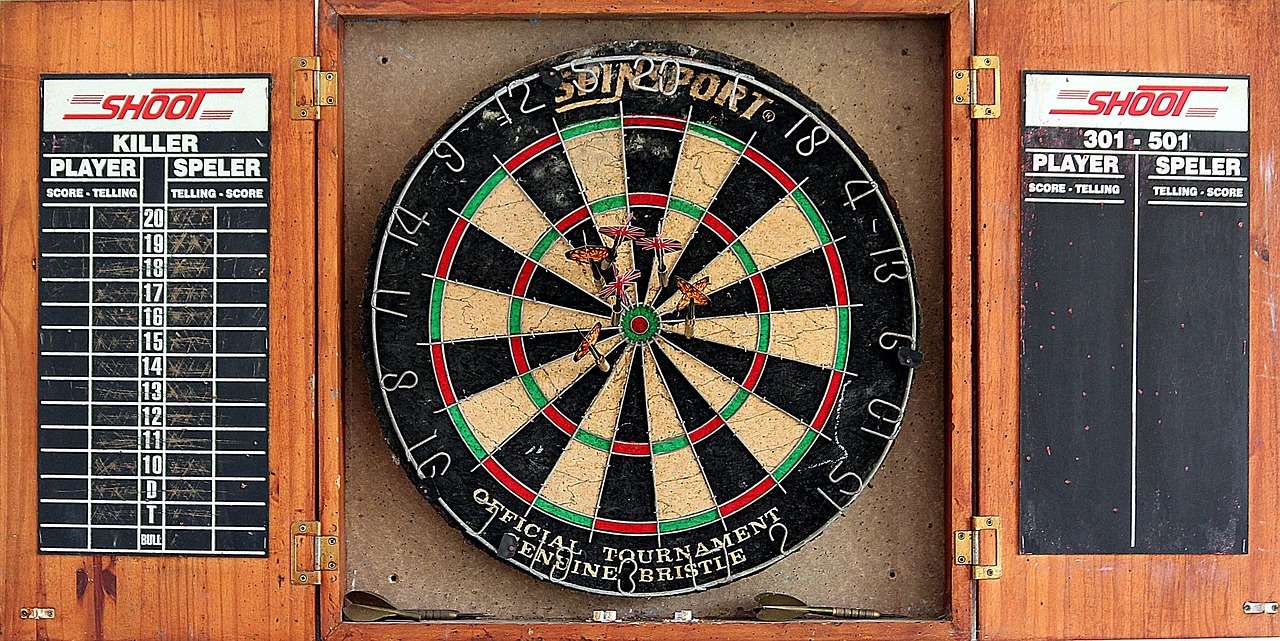Winning in fantasy darts hinges on understanding player statistics and strategically selecting a team that consistently scores high; this Fantasy Darts Strategy Comparison will guide you through various methods to build a winning team. This article explores different fantasy darts strategies, including data analysis, player form evaluation, and risk management, to help you dominate your league.
⚠️ Still Using Pen & Paper (or a Chalkboard)?! ⚠️
Step into the future! The Dart Counter App handles all the scoring, suggests checkouts, and tracks your stats automatically. It's easier than you think!
Try the Smart Dart Counter App FREE!Ready for an upgrade? Click above!
Understanding the Basics of Fantasy Darts
Before diving into advanced strategies, it’s crucial to understand the fundamentals of fantasy darts. Most leagues operate on a points-based system, where players earn points for hitting specific targets (like 180s, high checkouts, and leg wins). The goal is to assemble a team of dart players who consistently score well in these categories.
Key elements to consider when drafting players include their average score per leg, their 180s per leg ratio, their checkout percentage, and their overall consistency. Researching these statistics is paramount for building a successful team.
Understanding the scoring system of your specific league is also vital. Some leagues may award bonus points for certain achievements, such as a nine-dart finish, so tailoring your draft strategy to align with the scoring system can give you an edge.

Data-Driven Fantasy Darts Strategy
One of the most effective fantasy darts strategies is to leverage data analytics. Modern darts tournaments generate a wealth of data that can be used to predict player performance. Websites like DartsDatabase and DartConnect provide detailed statistics on professional dart players.
When using a data-driven approach, consider these metrics:
- Average Score Per Leg (ASL): A high ASL indicates consistent scoring ability.
- 180s Per Leg (180s/L): This shows how often a player hits the maximum score.
- Checkout Percentage (Checkout %): Measures a player’s ability to finish legs under pressure.
- First 9 Dart Average: Gives an idea of the player’s scoring potential in the crucial opening stages of a leg.
Analyzing trends and identifying players who are consistently improving is crucial. Don’t just look at historical data; pay attention to recent performances and any changes in a player’s form.
For example, if a player has significantly increased their 180s per leg ratio over the past few months, they may be a valuable addition to your team, even if their overall average score is not exceptionally high. Use the Darts Culture And Community Guide for more information on darts statistics and player performance.
Form-Based Fantasy Darts Strategy
While data is valuable, it’s essential to supplement it with an assessment of a player’s current form. A player’s recent performance can be a strong indicator of their future success. Tune in to darts tournaments, read news articles, and follow social media to stay updated on player form and any potential injuries or personal issues that may affect their game.
Consider these factors when evaluating player form:
- Recent Tournament Results: How have they performed in their last few tournaments?
- Head-to-Head Records: Do they have a good record against their upcoming opponents?
- Mental State: Are they playing with confidence and composure?
Sometimes, a player may be struggling with their game despite having strong historical data. In such cases, it may be wise to bench them in favor of a player who is currently in better form. Knowing how to Promote Local Darts is critical, but equally important is staying on top of the professional scene for fantasy leagues.
Also, look for players who seem to be thriving under pressure. Some players excel in high-stakes matches, while others crumble. Identifying players who perform well in crucial moments can be a valuable asset to your fantasy team.

Risk Management in Fantasy Darts
Risk management is another crucial aspect of fantasy darts strategy. Every player carries some level of risk, whether it’s due to potential injury, inconsistency, or simply facing tough competition. It’s important to diversify your team and avoid putting all your eggs in one basket.
Here are some risk management strategies to consider:
- Avoid Overreliance on Star Players: While it’s tempting to draft top players, they can be expensive and may not always perform to expectations.
- Diversify Your Team: Choose players from different countries and playing styles to reduce your vulnerability to specific trends or events.
- Have Backup Options: Identify potential replacements for your key players in case of injury or poor form.
Also, consider the tournament schedule and the potential for player burnout. Players who are competing in multiple tournaments may be more susceptible to fatigue and injury. It may be wise to avoid drafting players who have a particularly demanding schedule.
Furthermore, be aware of any potential rule changes or tournament format changes that could impact player performance. For example, a change in the checkout rules could favor players with strong finishing skills.
The Importance of Head-to-Head Records in Fantasy Darts
Analyzing head-to-head records can provide valuable insights when making fantasy darts selections. Some players consistently struggle against specific opponents, regardless of their overall form. Identifying these matchups can help you make informed decisions about who to start and who to bench.
When examining head-to-head records, consider these factors:
- Overall Record: How many times has each player won in their previous encounters?
- Recent Matches: How have they performed against each other in their most recent matches?
- Venue: Does one player tend to perform better in a particular venue?
It’s important to note that head-to-head records are not always predictive of future performance. Players can improve their game over time, and circumstances can change. However, head-to-head records can provide valuable context and help you identify potential advantages or disadvantages.
For example, if a player has a consistently poor record against a particular opponent, it may be wise to bench them when they are scheduled to play that opponent. Conversely, if a player has a strong record against an opponent, they may be a good pick for your team.

Value Picks and Sleepers in Fantasy Darts
Identifying value picks and sleepers is a crucial component of a successful fantasy darts strategy comparison. These are players who are often overlooked by other fantasy players but have the potential to deliver strong performances. Finding these hidden gems can give you a significant advantage over your competition.
Here are some tips for identifying value picks and sleepers:
- Look for Players on the Rise: Identify players who are showing signs of improvement but haven’t yet broken through to the top tier.
- Consider Players with a High Ceiling: Look for players who have the potential to score big but may be inconsistent.
- Pay Attention to Youth Players: Young players often have a lot of upside and can be undervalued in fantasy drafts.
It’s also important to consider the player’s role on their team. A player who is given more opportunities to play may have a higher chance of scoring well, even if they are not considered a star player.
Furthermore, be aware of any potential roster changes or injuries that could create opportunities for undervalued players to step up and perform. Successful Building Local Darts League Club Guide strategies involve identifying emerging talent, and that skill also applies to fantasy leagues.
Adapting Your Fantasy Darts Strategy
The world of darts is constantly evolving, and your fantasy darts strategy needs to evolve with it. Don’t be afraid to make adjustments to your team throughout the season based on player performance, injuries, and changes in the tournament landscape.
Here are some tips for adapting your strategy:
- Monitor Player Performance Regularly: Keep track of your players’ statistics and form throughout the season.
- Be Willing to Make Trades: Don’t be afraid to trade away players who are underperforming or to acquire players who are on the rise.
- Stay Updated on Darts News: Follow darts news and social media to stay informed about any potential changes that could affect player performance.
It’s also important to be patient. Not every move you make will be successful, and it’s important to learn from your mistakes. The key is to stay adaptable and continue to refine your strategy based on the information you have available.
Furthermore, don’t be afraid to experiment with different strategies. Try new things and see what works best for you. The best fantasy darts players are those who are constantly learning and adapting.

The Mental Game in Fantasy Darts
While statistics and data analysis are crucial, don’t underestimate the importance of the mental game in fantasy darts. A player’s mental state can have a significant impact on their performance, and it’s important to consider this factor when making your selections.
Consider these factors when assessing a player’s mental state:
- Confidence: Are they playing with confidence and belief in their abilities?
- Composure: Are they able to remain calm and focused under pressure?
- Motivation: Are they motivated to win and perform at their best?
It can be difficult to assess a player’s mental state from afar, but you can gather clues from their body language, interviews, and social media posts. Look for players who seem to be enjoying their game and are in a positive frame of mind.
Furthermore, be aware of any potential distractions or stressors that could affect a player’s mental state. Personal issues, family problems, or financial difficulties can all take a toll on a player’s performance.
League Rules and Scoring Variations
A critical aspect of Fantasy Darts Strategy Comparison is thoroughly understanding your specific league’s rules and scoring system. Variations in scoring can drastically change the value of certain player attributes.
Here are some common scoring variations to consider:
- Points per Leg: Some leagues award more points for winning a leg than others.
- Bonus Points for 180s: Leagues may offer varying amounts of bonus points for hitting 180s.
- Checkout Bonuses: The size of the checkout can affect bonus points awarded. Higher checkouts often yield more points.
Tailor your draft and team management strategy to maximize points within your league’s specific scoring framework. For example, if your league heavily rewards 180s, prioritize players with high 180s per leg ratios, even if their overall average isn’t the highest.
Equally important is understanding any rules regarding substitutions, roster size, and the number of players you can select from a single event. Adhering to these rules is essential for staying competitive and avoiding penalties.

Putting It All Together: A Winning Fantasy Darts Strategy
Crafting a winning fantasy darts strategy comparison requires a multifaceted approach. Combine data analysis, form assessment, risk management, and an understanding of your league’s unique rules and scoring system. Stay flexible, adapt to changing circumstances, and never stop learning.
Here’s a recap of key takeaways:
- Analyze Player Statistics: Use data to identify players with consistent scoring ability.
- Evaluate Current Form: Assess recent performance and mental state.
- Manage Risk: Diversify your team and avoid overreliance on star players.
- Understand Head-to-Head Records: Identify favorable and unfavorable matchups.
- Find Value Picks: Target overlooked players with high potential.
- Adapt Your Strategy: Make adjustments based on player performance and news.
- Know Your League Rules: Tailor your strategy to the specific scoring system.
By following these guidelines, you can increase your chances of success in your fantasy darts league and dominate your competition.
Conclusion
Mastering the art of fantasy darts requires a blend of analytical prowess and strategic thinking. This Fantasy Darts Strategy Comparison has armed you with the tools to build a formidable team. Remember to leverage data, assess player form, manage risk effectively, and understand your league’s unique rules. By consistently refining your strategy and adapting to the ever-changing landscape of professional darts, you’ll be well-equipped to climb the ranks and claim victory. Now, put these strategies into practice and start dominating your fantasy darts league! Looking to expand your darts knowledge? Explore our resources on How To Start A Darts League.
Hi, I’m Dieter, and I created Dartcounter (Dartcounterapp.com). My motivation wasn’t being a darts expert – quite the opposite! When I first started playing, I loved the game but found keeping accurate scores and tracking stats difficult and distracting.
I figured I couldn’t be the only one struggling with this. So, I decided to build a solution: an easy-to-use application that everyone, no matter their experience level, could use to manage scoring effortlessly.
My goal for Dartcounter was simple: let the app handle the numbers – the scoring, the averages, the stats, even checkout suggestions – so players could focus purely on their throw and enjoying the game. It began as a way to solve my own beginner’s problem, and I’m thrilled it has grown into a helpful tool for the wider darts community.